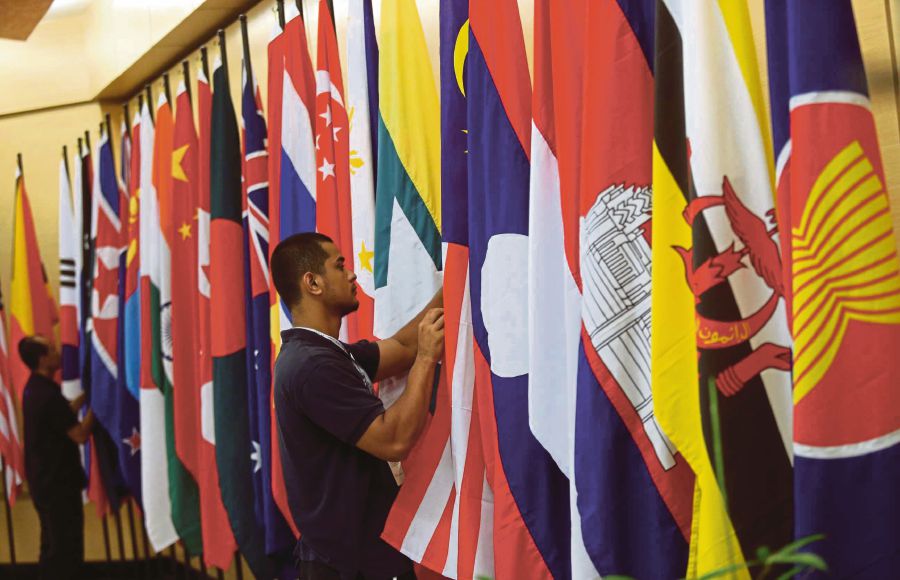AMIDST rising protectionist sentiments worldwide, Asean, turning half a century in August, continues its integration towards achieving a people-centred, people-oriented and resilient community.
The Asean Economic Community (AEC) 2015 and 2025 Blueprints, supported by Connectivity Master Plan 2025, laid forward the aspiration of a single market and production base characterised by, among others, a free flow of skilled labour.
Unlike the European Union’s unrestricted labour flows, AEC differs sharply by only promoting a “free” flow of skilled labour through Mutual Recognition Arrangements (MRAs), Asean Qualification Reference Framework (AQRF), and Asean Agreement on Movement of Natural Persons (MNP).
The MNP caters to temporary cross-border movement, while MRAs allow professionals in eight professions to work in other Asean member states. But, taking advantage of these provisions can be difficult due to divergence of each member states’ labour policies and visa procedures.
Whilst it remains to be seen how member states translate these into their domestic and national policies, these provisions only capture a small part of Asean’s labour pool.
The eight professions covered under MRAs merely involve less than two per cent of Asean’s labour force. Nearly 90 per cent of intra-Asean migrants are low-skilled.
The enthralling slogan of Asean “Community” will remain a pipe dream if member states are reluctant to address actual issues concerning labour mobility in Southeast Asia.
Youth and Sports Minister Khairy Jamaluddin, speaking at “Asean 50/50: Projecting the Future of a Community”, highlighted lingering fears about the wisdom of ever-closer integration despite rising level of confidence about Asean.
“Addressing this disparity is key if we ever want to effect a truly single economic market”, the minister said.
When economic integration is being politicised and its potential benefits are being snubbed, adjusting people’s perception is the key to lessen the fear of regional integration.
For the migrant-destination countries such as Malaysia and Singapore, the impression of foreign talent taking up local jobs remains prevalent.
Scratching the surface, this whim might appear rational. But, often forgotten, immigrants do not only increase labour supply, they simultaneously raise its demand.
Through income, immigrants buy and consume local products. This subsequently spurs economic growth.
Nonetheless, this argument does not deter the resentment towards well-heeled expatriates.
The influx of foreign professionals, which arguably, boosts property prices and cost of living, dissuades public support for a more liberalised labour market.
Increased foreign talent also intensifies competition in the local labour market, resulting in winners and losers. However, in the long run, the country’s productivity will rise as winners continue to innovate.
To remain relevant to their people, Asean member states have a bigger task of spurring competition in the economy while simultaneously taking care of those who are adversely hit by the integration process.
Embracing the Industry 4.0, Asean member states cannot afford to be complacent with their existing labour pools.
The region has to continually attract those who constantly learn and keep up with technological advances.
For the migrant-source countries such as Indonesia, the brain drain needs to be transformed into wisdom gain.
These countries should relinquish the zero-sum mentality of brain drain. This makes strengthening the capacity of migrant-source countries to absorb knowledge spillovers from migrant-receiving countries vital.
Measures such as collaborative knowledge networks in Asean would help its member states to mutually gain from an integrated labour market.
On the flow of unskilled migrant workers, concerns over national security prevails. Asean member states ought to harmonise between deepening labour mobility and border security.
Greater attention and efforts also need to be given for adequate protection of migrant workers. Promoting investment in human resource and skills upgrading, particularly for vulnerable groups, is necessary.
Without a doubt, enhancing labour mobility in the region requires Asean to go far beyond the alphabet soup of arrangements such as MRAs, AQRF and Asean Agreement on MNP. A holistic approach encompassing three pillars of Asean Community (i.e. Political-Security, Economic and Socio-Cultural pillars) is crucial.
Though it might be sensitive to address these issues, Asean member states cannot afford to carry on with Asean’s symbolic celebration without significant substance.
One might argue that turning 50 is an achievement in itself for Asean. In the presence of the ever-changing global and regional economic landscape, being merely alive is not enough.
As the world’s sixth largest economy, with a population size of around 630 million, Asean has a lot to offer its people and the world at large.
But, this depends on its member states’ willingness for a deeper integration. Otherwise, Asean integration will remain at the lowest common denominator at its own peril.
This article first appeared in New Straits Times on 6 June 2017.





